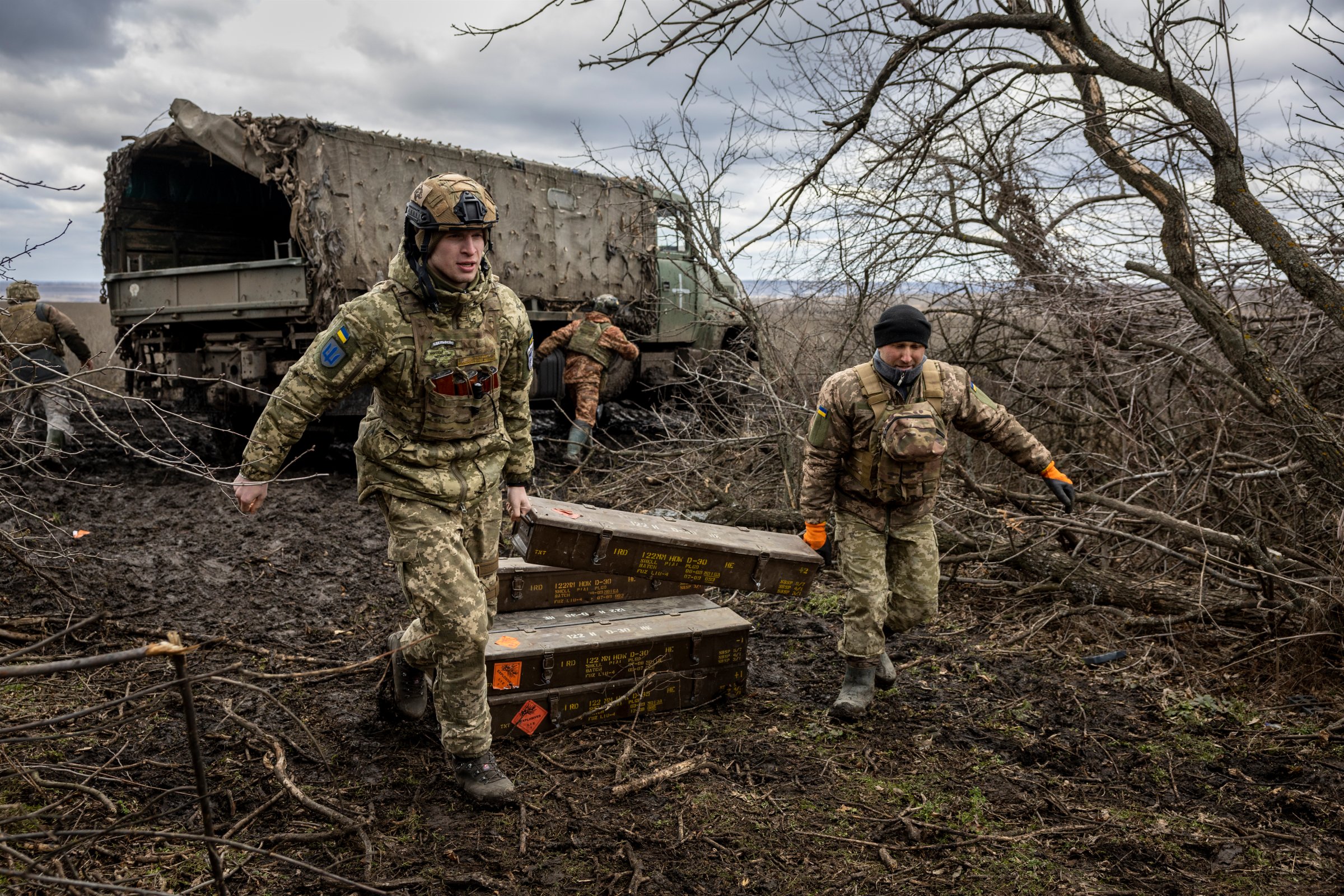
European Union member states are set to reach an agreement that would provide Ukraine with 1 million artillery rounds over the next year.
The EU’s foreign and defense ministers are expected on Monday to back spending €1 billion ($1.1 billion) from its European Peace Facility for EU countries to jointly buy ammunition, according to people familiar with the matter. They will also back spending another €1 billion from the same fund to reimburse what member states send from their own existing stockpiles of both modern and Soviet-era ammunition to Ukraine.
The joint orders will be funneled either through a procurement project led by the European Defense Agency or by individual EU nations bringing several other EU countries on board onto their contracts, said the people, who spoke on the condition of anonymity. Up to 60% of those orders that get delivered to Ukraine could then be reimbursed by the EPF.
The pledge to provide Ukraine with 1 million rounds of shells over the next 12 months is also expected to be endorsed by EU leaders when they meet in Brussels at the end of the week, according to the people.
Read More: Why the West Is Getting Nervous About Ammunition Shortages for Ukraine
Ukraine has said it will need 1 million rounds of ammunition this year, and Estonia has estimated that would cost around €4 billion. The Baltic nation was the first member state to put the issue on the table a month ago, proposing to urgently fund the ramping up of production capacity in order to provide the required supplies.
Estonia said at the time that Ukraine was using on average between 60,000 and as many as 210,000 rounds of ammunition per month, but that the European defense industry only has the capacity to produce as many as 25,000 shells in that time frame. Meanwhile, Russia was firing around 20,000 to 60,000 shells a day.
Beyond a political agreement this week, several technical issues remain to be solved. For starters, the volume of the much-needed 155mm ammunition that is available in existing stocks is still not clear. There are some 15 manufacturers of 155mm shells in the EU spread across 11 countries.
Another issue is whether purchasing efforts should focus on European firms only or whether they should be open to non-EU suppliers, the people said. While a procurement project led by the European Defense Agency would be restricted to the EU and Norway, some countries are pushing for the possibility to buy abroad when procuring as a small group of nations if Europe doesn’t have enough production capacity to meet its target.
Member states have also been informed that one issue the industry faces is sourcing enough gunpowder as it is only available in a small number of countries, said one of the people. It will be a number of weeks before some of these questions are answered.
Member states are also discussing ways to enhance production capacity and jointly procure ammunition for both Ukraine and to replenish their own stocks in future. Deploying new funding to achieve that goal would be a political decision for member states.
More Must-Reads from TIME
- Cybersecurity Experts Are Sounding the Alarm on DOGE
- Meet the 2025 Women of the Year
- The Harsh Truth About Disability Inclusion
- Why Do More Young Adults Have Cancer?
- Colman Domingo Leads With Radical Love
- How to Get Better at Doing Things Alone
- Michelle Zauner Stares Down the Darkness
Contact us at letters@time.com